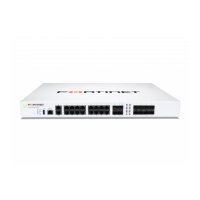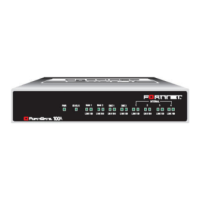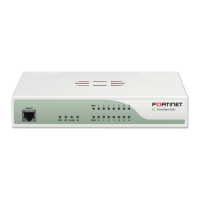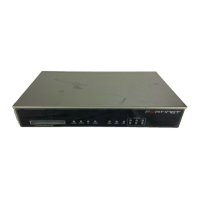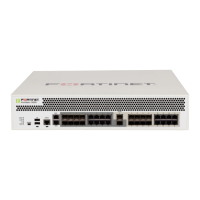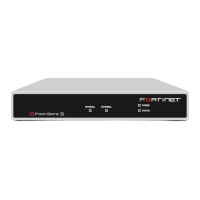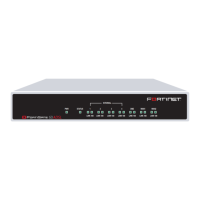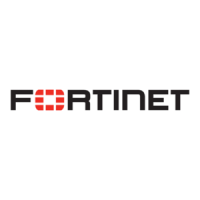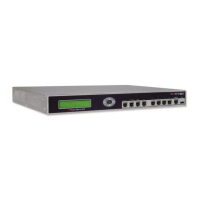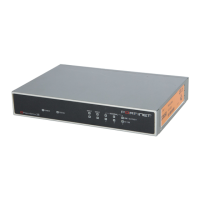Router Dynamic OSPF
FortiGate Version 4.0 MR1 Administration Guide
01-410-89802-20090903 365
http://docs.fortinet.com/ • Feedback
Areas Information about the areas making up an OSPF AS. The header of an OSPF
packet contains an area ID, which helps to identify the origination of a packet
inside the AS.
Create New Define and add a new OSPF area to the Areas list. For more information, see
“Defining OSPF areas” on page 367.
Area The unique 32-bit identifiers of areas in the AS, in dotted-decimal notation.
Area ID 0.0.0.0 references the backbone of the AS and cannot be changed or
deleted.
Type The types of areas in the AS:
• Regular - a normal OSPF area
• NSSA - a not so stubby area
• Stub - a stub area.
For more information, see “Defining OSPF areas” on page 367.
Authentication The methods for authenticating OSPF packets sent and received through all
FortiGate interfaces linked to each area:
None — authentication is disabled
Text — text-based authentication is enabled
MD5 — MD5 authentication is enabled.
A different authentication setting may apply to some of the interfaces in an
area, as displayed under Interfaces. For example, if an area employs simple
passwords for authentication, you can configure a different password for one
or more of the networks in that area.
Networks The networks in the OSPF AS and their area IDs. When you add a network to
the Networks list, all FortiGate interfaces that are part of the network are
advertised in OSPF link-state advertisements. You can enable OSPF on all
FortiGate interfaces whose IP addresses match the OSPF network address
space. For more information, see “Specifying OSPF networks” on page 368.
Create New Add a network to the AS, specify its area ID, and add the definition to the
Networks list.
Network The IP addresses and network masks of networks in the AS on which OSPF
runs. The FortiGate unit may have physical or VLAN interfaces connected to
the network.
Area The area IDs that have been assigned to the OSPF network address space.
Interfaces Any additional settings needed to adjust OSPF operation on a FortiGate
interface. For more information, see “Selecting operating parameters for an
OSPF interface” on page 369.
Create New Create additional/different OSPF operating parameters for a unit interface
and add the configuration to the Interfaces list.
Name The names of OSPF interface definitions.
Interface The names of FortiGate physical or VLAN interfaces having OSPF settings
that differ from the default values assigned to all other interfaces in the same
area.
IP The IP addresses of the OSPF-enabled interfaces having additional/different
settings.
Authentication The methods for authenticating LSA exchanges sent and received on specific
OSPF-enabled interfaces. These settings override the area Authentication
settings.
Delete and Edit
icons
Delete or edit an OSPF area entry, network entry, or interface definition. Icons
are visible only when there are entries in Areas, Networks, and Interfaces
sections.
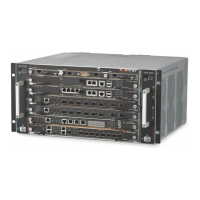
